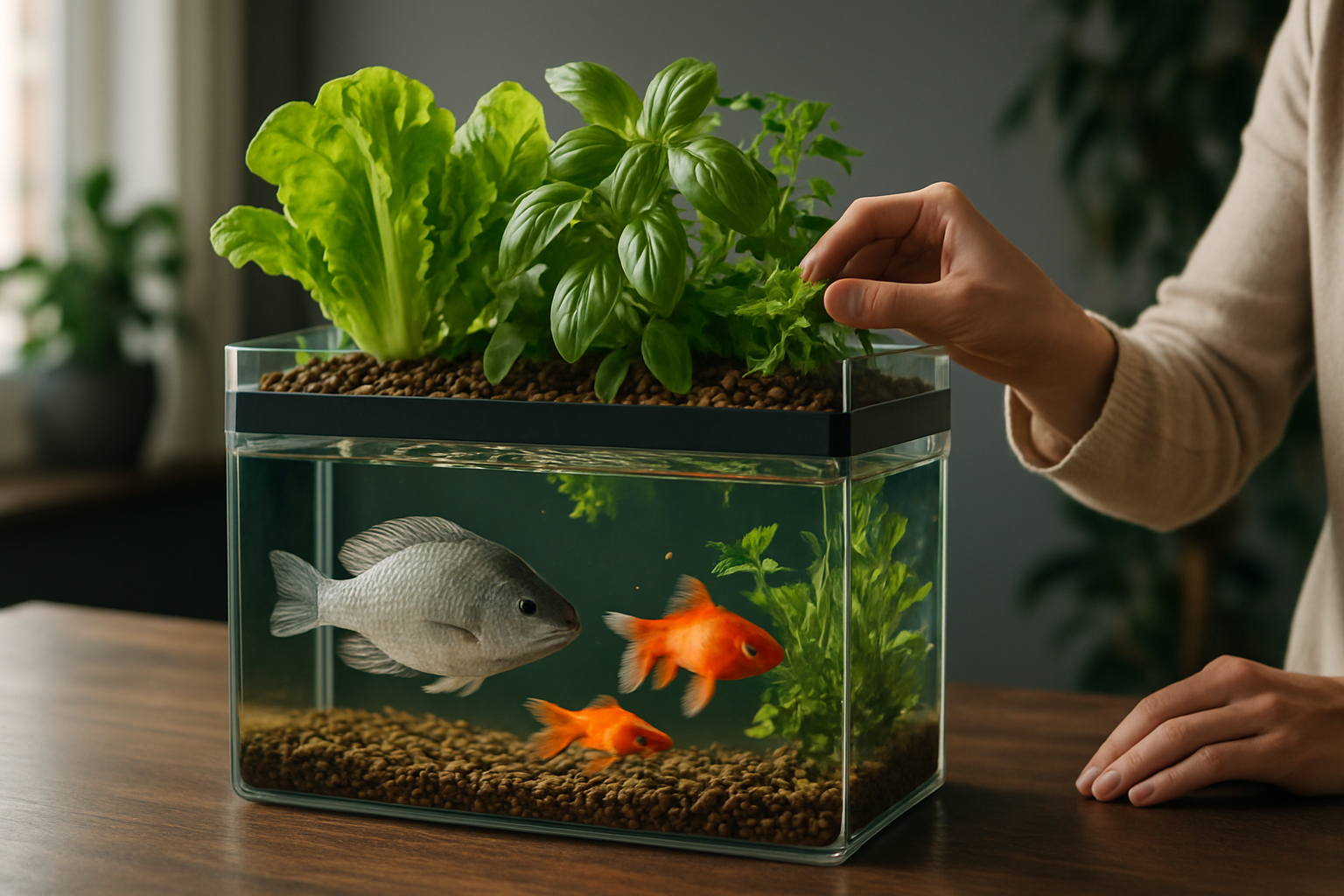Aquaponics: The Symbiotic Symphony of Fish and Plants
Imagine a world where fish and plants coexist in perfect harmony, creating a self-sustaining ecosystem that produces both protein and vegetables. This isn't science fiction; it's the fascinating realm of aquaponics. Combining aquaculture and hydroponics, this innovative farming method is revolutionizing sustainable food production and offering exciting possibilities for urban agriculture and eco-friendly pet keeping.

The Ancient Roots of Aquaponics
The concept of aquaponics isn’t entirely new. Its origins can be traced back to ancient civilizations, where early farmers inadvertently discovered the benefits of combining fish and plant cultivation. The Aztecs, for instance, developed chinampas, artificial islands in shallow lakes where they grew crops fertilized by fish waste. Similarly, Asian rice paddies often incorporated fish, creating a mutually beneficial environment.
However, it wasn’t until the late 20th century that modern aquaponics began to take shape. Researchers and enthusiasts started exploring ways to combine recirculating aquaculture systems with hydroponic techniques, laying the groundwork for today’s sophisticated aquaponic setups.
The Science Behind the System
At the heart of aquaponics lies a delicate balance of biological processes. Fish produce ammonia-rich waste, which is toxic to them in high concentrations. Beneficial bacteria in the system convert this ammonia into nitrites and then into nitrates, which are essential nutrients for plant growth. As plants absorb these nitrates, they effectively clean the water, creating a healthy environment for the fish.
This cycle creates a nearly self-sustaining ecosystem, requiring minimal input beyond fish food and occasional pH adjustments. The result is a highly efficient system that uses up to 90% less water than traditional soil-based agriculture while producing both fish protein and fresh vegetables.
Designing an Aquaponic System
Aquaponic systems come in various sizes and configurations, from small indoor setups suitable for apartments to large commercial operations. The basic components include:
-
Fish tank: Houses the fish population
-
Grow beds: Where plants are cultivated
-
Filtration system: Removes solid waste and facilitates bacterial conversion of ammonia
-
Pump: Circulates water between the fish tank and grow beds
The choice of fish species depends on factors such as climate, system size, and local regulations. Popular options include tilapia, trout, and catfish. For plants, leafy greens like lettuce and herbs thrive in aquaponic systems, but with proper care, even fruiting plants like tomatoes and peppers can be grown successfully.
The Rise of Aquaponics in Urban Agriculture
As urban populations grow and arable land becomes scarce, aquaponics offers a promising solution for sustainable food production in cities. Rooftop gardens, abandoned warehouses, and even shipping containers are being transformed into productive aquaponic farms, bringing fresh, locally grown food to urban communities.
These urban aquaponic systems not only provide food but also serve as educational tools, demonstrating the principles of sustainable agriculture and ecosystem management. Some cities are even incorporating aquaponics into public spaces, creating beautiful and functional green areas that engage and educate citizens.
Aquaponics as a Sustainable Pet-Keeping Method
Beyond commercial agriculture, aquaponics has found a niche in the world of pet-keeping and home gardening. Hobbyists are creating miniature ecosystems that combine ornamental fish with decorative or edible plants, offering a unique and engaging way to keep aquatic pets.
These home systems, often ranging from 20 to 100 gallons, can support a variety of fish species, from colorful guppies to peaceful bettas. The plants not only provide natural filtration but also create a visually stunning display, turning the aquarium into a living work of art.
The cost of setting up a small home aquaponic system typically ranges from $200 to $1000, depending on size and complexity. While this initial investment may be higher than a traditional aquarium, the long-term benefits of reduced maintenance and the joy of harvesting home-grown produce make it an attractive option for many pet and plant enthusiasts.
Challenges and Future Prospects
Despite its many advantages, aquaponics faces challenges. Balancing the ecosystem requires knowledge and careful monitoring, especially in the early stages. Energy costs for pumps and heating can be significant, particularly in colder climates. Additionally, regulatory frameworks in many areas are still catching up with this innovative farming method.
However, ongoing research and technological advancements are addressing these challenges. Solar-powered systems are reducing energy costs, while AI and IoT solutions are making system management more efficient and accessible to beginners.
As we look to the future, aquaponics holds immense potential. From providing food security in urban areas to offering sustainable solutions for desert regions, this versatile method is poised to play a significant role in the future of agriculture and pet-keeping alike.
In conclusion, aquaponics represents a fascinating convergence of technology, nature, and sustainable living. Whether you’re a commercial farmer, an urban gardener, or a pet enthusiast, this innovative system offers a unique way to engage with the natural world while contributing to a more sustainable future. As we continue to explore the possibilities of aquaponics, we’re not just growing fish and plants – we’re cultivating a new relationship with our food, our pets, and our planet.





